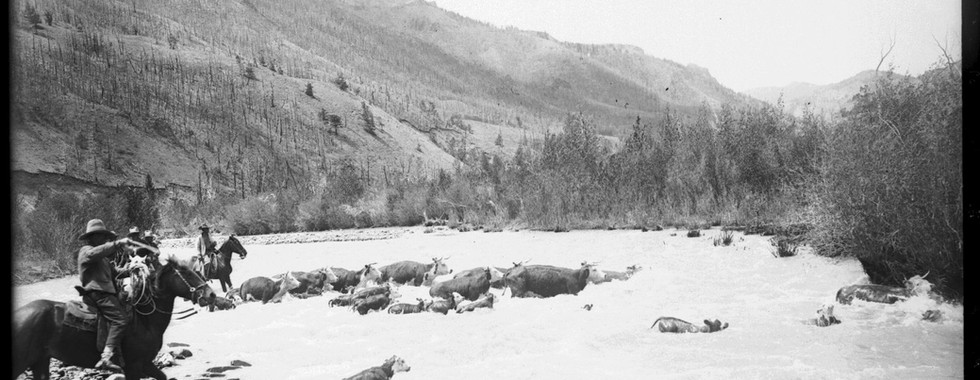Charles Belden
- Matthew Kerns

- Jun 12, 2020
- 2 min read
Texas Jack Omohundro shaped the American West not just in the perceptions of theater-goers who watched him on stage, but through the lives of the men he took on treks throughout the West, and specifically in Wyoming. In 1878, Texas Jack headed for Rawlins with Count Otto Franc von Lichtenstein and Doctor Amandus Ferber. Both men were wealthy Germans who had earned their fortunes in America; Franc importing fruit and Ferber as one of New York City's finest medical doctors.
The trio spent three weeks exploring south of Rawlins followed by six weeks in the Bighorn Basin. As they fished and hunted for deer, antelope, elk, and buffalo, Franc and the former Texas cowboy discussed the region's potential for cattle ranching. The next year, Franc returned to the area to start his own cattle operation along the Greybull River, naming it Pitchfork Ranch.

Franc died in 1903. He never married and had no children, and the ranch was left in his will to two sisters who still lived in Germany. Franc's brother traveled to Wyoming from his home in New York City and arranged the sale of the property for his sisters, and Pitchfork Ranch was purchased by L. G. Phelps. L. G.'s son Eugene traveled throughout Europe and Russia with some college friends from the Massachusetts Institute of Technology in the summer of 1909. One of those friends was Charles Belden, who decided to join Eugene at the Pitchfork when the trip ended, spending time working as a cowboy and falling in love with Eugene's sister Frances.

Frances and Charles were married in 1913 and moved to the ranch full-time in 1914. L. G. Phelps died in 1922, leaving the Pitchfork to his son Eugene and his son-in-law Charles Belden. Neither were adept at running a ranch. They met in engineering school at M.I.T. and Eugene remained preoccupied with inventions while Belden was devoted to photography. He had taken pictures for much of his life, including during his college trip to Europe and Russia with Eugene Phelps, and he continued to use his camera to document life on the Pitchfork Ranch.

His photographs document the entire cycle of ranch life, from birthing and branding cattle to sheering sheep, making camp, repairing fences, and pitching hay. He sold his photographs to a range of publications. Belden's photographs were printed in livestock magazines like The Cattleman and The American Hereford Journal, newspapers like the Denver Post and the Chicago Daily News, and broadly read magazines like National Geographic, the Saturday Evening Post, and Life. His work shaped the way that cowboys and ranching were perceived by the American public in much the same way Texas Jack's writings on cowboy life featured in the Spirit of the Times and reprinted for Buffalo Bill's Wild West had fifty years earlier.
If you're ever lucky enough to spend time in the Bighorn Basin, you can visit the Pitchfork Ranch as well as the Charles Belden Western Photography Museum in Meeteetse, Wyoming.




































Comments